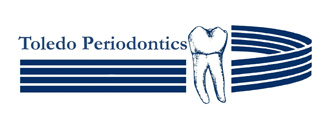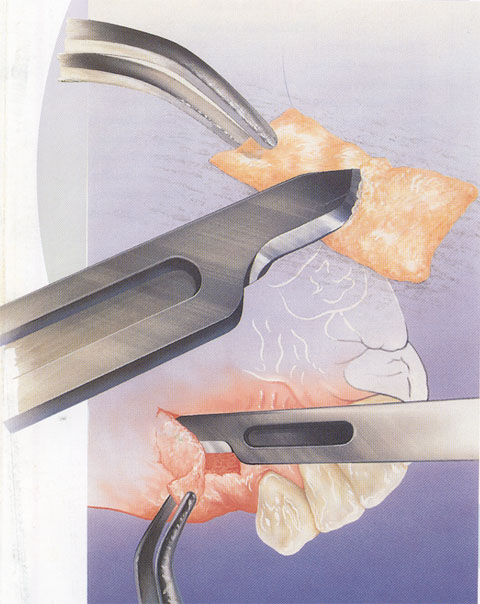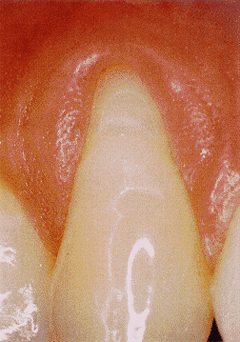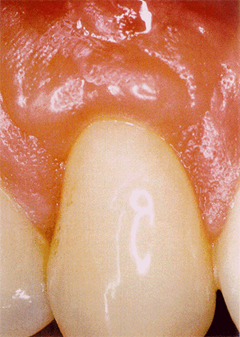Treatment Methods
Several options are available for treating periodontal disease, depending on the extent of the disease and your overall health. Your health history, oral examination and x-ray examination all help Dr. Tohme determine the best possible approach to treating your periodontal disease. It is important to remember that periodontal disease is a chronic disease similar to diabetes or high blood pressure. It can never be cured, only controlled.
Tissue Augmentation:
When gum tissues have pulled away from the tooth (receded) or have been lost due to trauma or gum infection, gingival grafting is a treatment option to cover exposed root surfaces. This not only provides an improved appearance, but protects the exposed root surface which can be very sensitive to cold or touch, as well as highly susceptible to decay (cavities).
Gingival grafting involves careful and gentle numbing of two separate areas of the mouth. If you have any concerns regarding dental anesthesia, please view “Anesthesia” under our “Patient Information” tab. Once numbed, a small tissue graft is taken from the donor site, which is usually on the palate. The gum is carefully separated from the tooth where the area of recession is present, and the tissue graft is positioned and attached to the gum and tooth in the area of recession with stitches.
You will be given post-op instructions regarding care of the grafted area. Be sure to continue taking all medications as directed. Minor tenderness may be noted in the palatal area where the donor tissue was harvested, and you may find it more comfortable to chew on the opposite side of the mouth for a few days. A short appointment will be scheduled to remove stitches and evaluate your healing in 7-10 days. Over the next few weeks, the tissue heals and covers the area where the recession was previously present.
Scaling and Root Planing or “Nonsurgical” treatment: Scaling and root planing are terms often used interchangeably with the terms “nonsurgical treatment” or “soft tissue management.” The goal of this type of treatment is to create a healing environment in the mouth by disrupting the bacterial plaque and calculus (tartar) that harbor harmful bacteria. These treatments are sometimes offered as the initial therapy to prepare the mouth for periodontal surgery. In other cases, the nonsurgical therapy is recommended as an alternative to surgical treatment, if it is expected that adequate healing will eliminate the need for surgery. After evaluating your overall health and the health of your mouth, you and Dr. Tohme will decide which treatment options are right for you.
Scaling: Scaling is the removal of plaque and tartar from above and below the gumline. An ultrasonic device may be used to remove heavy deposits and flush bacterial toxins from around the teeth and beneath the gums.
Root Planing: Root planing smooths roughnesses on root surfaces below the gumline. Just as someone would “plane” a piece of wood to remove roughnesses and irregularities, root planing removes irregularities and toxins that have irritated and infected the root surface. The gum tissue is then much more likely to return to a state of health that will allow reattachment to clean, smooth root surface which will prevent bacteria from colonizing under the gumline.
Antibiotics: Specialized time-released antibiotics such as Arestin® or Atridox® can be used as part of the scaling and root planing therapy. This delivers a potent, time-released dose of antibiotics to the specific area of gum infection. Research indicates that when used in conjunction with scaling a root planing, these antibiotics can reduce periodontal pockets by an additional 1-2 millimeters. While suitable for certain areas, these antibiotics are not appropriate for all situations. If you are allergic to tetracycline, pregnant or nursing or under the age of 12, these products will not be suitable for you. You and Dr. Tohme can discuss the value of this treatment option for your individual treatment.
Periodontal Flap Surgery or Pocket Reduction Surgery: When infected gums have pockets that are too advanced for scaling and root planning or have not responded to scaling and root planing, periodontal flap surgery is recommended. It is important to remember that scaling and root planning is a “blind” procedure, meaning the hygienist cannot see under the gumline where the calculus and bacteria are infecting the periodontal pockets. Flap surgery allows the periodontist to surgically open the gum tissues and have visible access to the infected areas. The mouth is thoroughly numbed for this procedure to ensure your comfort. (If you have any concerns regarding dental anesthesia, please refer to our “Anesthesia” information under the “Patient Information” tab.) All plaque and calculus (tartar) can then be definitively removed from the root surfaces, and bone or root irregularities can be smoothed. Infected gum tissue can be removed and the gums are carefully stitched back into place.
Mild pain medication such as ibuprofen (Aleve or Advil) or acetaminophen (Tylenol) is usually sufficient to relieve any post-surgical tenderness. As the gum tissues heal, they tighten around the tooth and re-attach to the cleaned root surface, thereby eliminating the infected pockets. This helps prevent bacterial plaque, which forms continuously in the mouth, from migrating and colonizing below the gums. Healthy gums reduce inflammation in the body, which in turn improves your overall systemic health.



